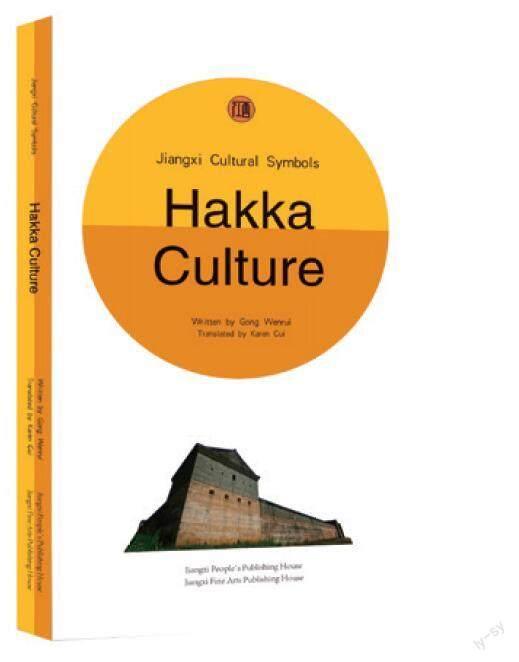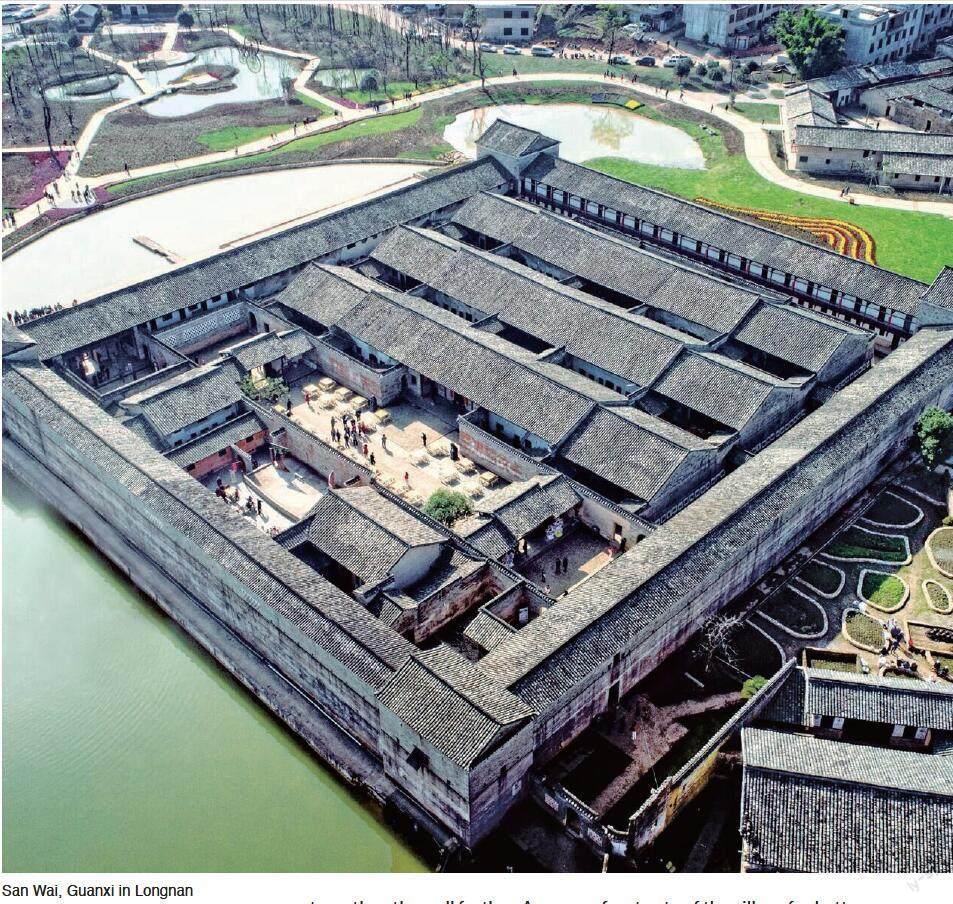Ancient Hakka Walled Villages for Communities
2024-04-26



This book reviews the history and process of the formation of Hakka and reveals the language characteristics, folk beliefs, and spiritual characteristics of the Hakka people. It is an excellent book that systematically introduces Ganzhou Hakka culture with rich content and pictures.
Gong Wenrui
Gong Wenrui, a member of the Chinese Writers Association, an expert consultant of Jiangxi Provincial Culture Research Institute, a part-time researcher at Hakka Research Center of Gannan Normal University, and a distinguished professor of the College of Literature of Gannan Normal University, has been engaged in research on Hakka and the local culture of Ganzhou for a long time.
Karen Cui
Karen Cui, Master of Translation, is a member of Society of Translators and Interpreters of British Columbia (STIBC).
In the Zhengde era of the Ming Dynasty, Wang Yangming governed Southern Jiangxi. When he travelled from Liren, Longnan to Xiali, Dingnan, to suppress the uprising at Sanli, he established a military pass at Chengling on the border of Dingnan County. The area to the west of this pass was, therefore, called Guanxi (to the west of the pass).
San Wai, Guanxi near Guanxixu, about 15 kilometres east of Longnan, was built between 1798 and 1827. The construction took nearly 30 years. To differentiate it from their ancestral residences, Lo Wai, people in later generations called the new village “San Wai.” San Wai in Guanxi occupies an area of 7,426 square metres, and its floor area reaches 11,477 square metres. It is 94.75 metres long and 83.36 metres wide. Due to its colossal size, San Wai, Guanxi, is also known as the “ancient Roman castle of the East.” The edifices are surrounded by lofty walls equipped with deep courtyards. Four blockhouses stand at the four corners. From a distance, the architectural complex resembles a miniature rectangle fortress. The entire village is in the shape of the character “回 (hui).” At the center of the complex within the smaller rectangle lies the core construction of the complex. It is an opulent residence composed of 14 courtyards and 124 master rooms arrayed in five columns. This is a typical example of a Hakka walled village, usually consisting of “nine residences and 18 halls.” The buildings inside the complex are connected or separated by verandas, walls and passages. With few ornaments, it is a simple, practical, and magnificent architectural complex combining residences, ancestral halls, fortresses, academies, and gardens. In July 2001, San Wai, Guanxi, and Yanyi Wei were included in the fifth batch of Major Historical and Cultural Sites Protected at the National Level by the State Council. In November 2004, San Wai, Guanxi, hosted the 19th World Hakka Conference and greeted the Hakka people worldwide. From then on, San Wai, Guanxi, became widely known.
Hakka walled villages were a pivotal architectural form for the ancient Hakka people. Serving as residences, ancestral halls, and fortresses, they were both practical and aesthetically appealing. Hakka walled villages in Southern Jiangxi are mostly rectangular, whereas Western Fujian villages are often round. Hakka walled villages in Eastern Guangdong are mainly in crescent shapes. In Southern Jiangxi, there are over 500 walled villages, out of which 376 are in Longnan. Most relatively well-preserved walled villages include the Guanxi walled village group, Yanyi Wei, Suyuan Wei, Yuzaitan Wei, and Wushi Wei in Longnan. In Quannan County, there is the Yaxi walled village group. In Dingnan, there are Huxing Wei and Mingyuandi Wei, and in Anyuan County lies the Dongsheng walled village group. On November 17, 2012, Southern Jiangxi walled villages were officially included in Chinas World Cultural Heritage Tentative List by the National Administration of Cultural Heritage.
Hakka walled villages in Southern Jiangxi are primarily rectangular and come in various sizes. The largest ones reach thousands of square metres to accommodate thousands of people. For example, Tianxin Wei in Wudang Town, Longnan, used to accommodate more than 900 residents. The smallest ones, about 400 to 500 square metres in size, serve only one household, such as Maogui Wei (also known as Xi Wei) in Liren Town, Longnan. Hakka villages in Southern Jiangxi can be roughly divided into two categories, one in a rectangle shape and the other in the shape of the character “國.” For the former type, there are no buildings at the center of the rectangle. This rule also holds true for walled villages in the shape of the character “回.” For the other type, which is the dominant one of the two, there is usually a complex composed of halls and rooms at the center of the village. Walled villages are commonly built with concrete, pebbles, slabs, and dressed stones by using the so-called “gilded silver” technique, where the outer wall, normally about 30 centimetres thick, is built with slabs while the inner part is constructed with rammed earth. Slabs or granite are also used to strengthen the wall further. As such, walled Hakka villages are typically fortified and robust. Normally, a Hakka walled village is equipped with a granary, a water well, a drainage system, grassland, and an opera stage. The walls are penetrated with holes for lookouts, guns, and firefighting. There must be a pond outside the front gate of the village for better fengshui.
Residents of a Hakka walled village were all descendants of the same ancestor. They treated each other as their family members. For example, in the prefect of Ganzhou, Zhou Yuheng, named his village Yanyi Wei (swallows and love birds village) in expression of his wish for an everlasting, happy marriage. Another characteristic of Hakka walled villages was that they were linked with a “blood bond.” One way that the Hakka people bonded with their families was to perform annual rituals dedicated to their ancestors. Therefore, every Hakka village was equipped with an ancestral hall. The headsman of the clan managed administrative affairs within the complex, such as transportation, public health, drainage, and disputes. Residents formed their own core-families within the walled house. When they performed the rituals, they gathered as a big family. In the event of an invasion, all residents in the complex jointly fought against their enemies.
The majority of Hakka walled villages in Southern Jiangxi were built in the late Ming and early Qing dynasties. Following the early Republic era, the construction of Hakka villages practically stopped. The earliest existing walled villages are Panshi Wei in Wushi Village, Yangcun, Longnan, which was established approximately in the Wanli era of the Ming Dynasty, and Yanyi Wei in Yangcun, built in the fifth year of the Shunzhi era (1648) in the Qing Dynasty. After examining these walled villages, we have found that for those built in later years, there was higher uniformity in their defence mechanism. The current most typical Hakka villages in Southern Jiangxi are usually rectangular, with four blockhouses at their corners, which is very common these days. It was not until the mid-Qing Dynasty that walled villages similar to San Wai, Guanxi, gained popularity.
Compared to walled villages in Meizhou and Longyan, those in Southern Jiangxi feature much larger sizes and stronger defenses. The Hakka walled villages in Southern Jiangxi do not possess complicated structures, but they are rare and impressive in the sense that the complexes serve as residences, fortresses, religious centers, conference halls, and central squares. In other words, they are incredibly immense and multi-functional. The esteemed scholar and director of the Department of Architecture at Tokyo University of the Arts, professor Kazutoshi Katayama, says, “The walled villages in Southern Jiangxi represent the Rome of the East.”
The Hakka people always live together and support each other in their walled villages. This is one important characteristic of the Hakka culture. Hakka walled villages, which carry great historical and cultural significance, not only provided ancient Hakka people with beautiful homes but also offer spiritual peace to Hakka people today. Currently, these walled villages have gradually lost their original functions as residences and fortresses, but they boast increasing historical and cultural values.
Hakka Culture
Gong Wenrui, Karen Cui
Jiangxi Peoples Publishing House
February 2022
55.00 (CNY)
